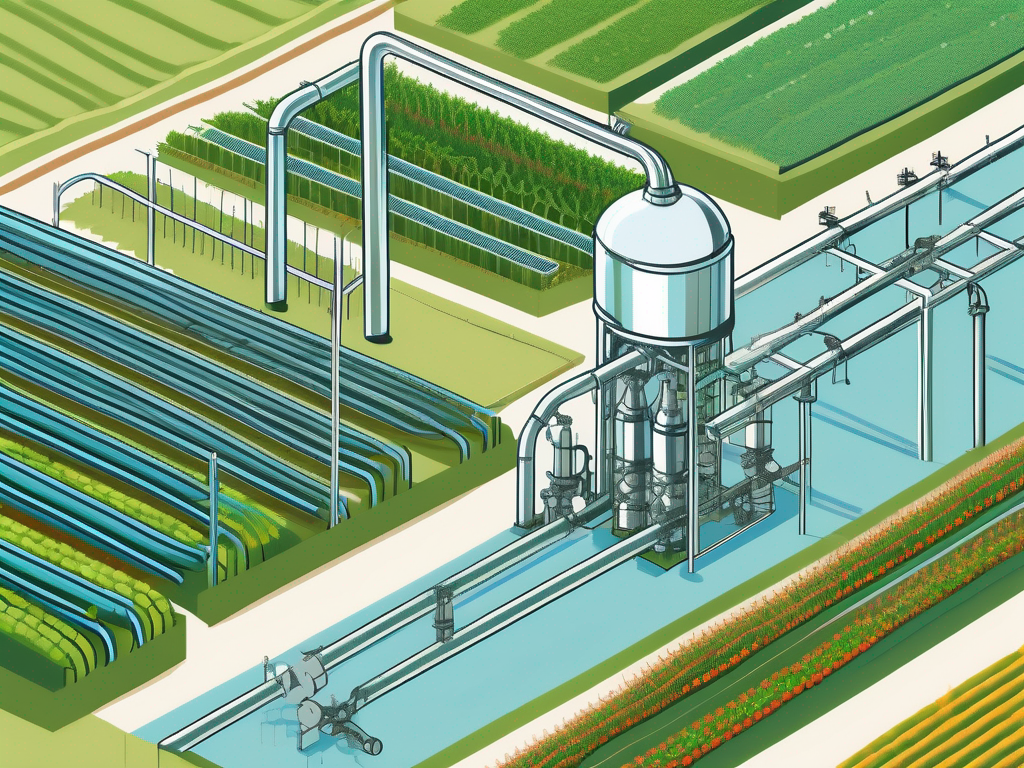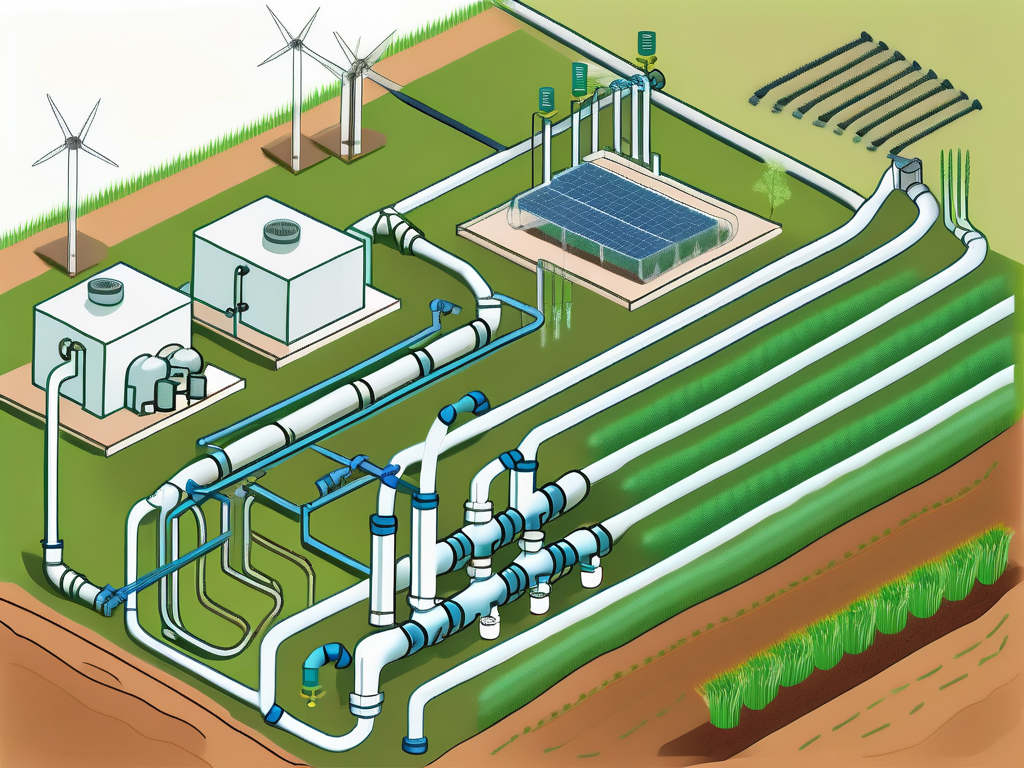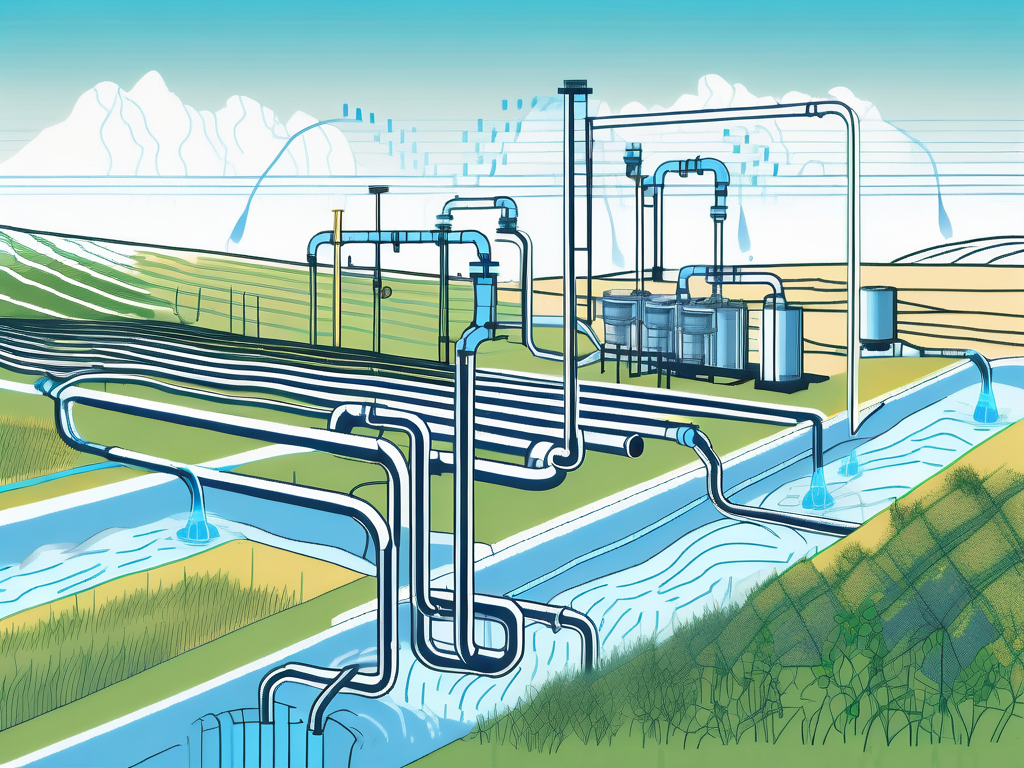
Irrigation Automation System: Revolutionizing Water Management for Efficient Farming
Irrigation Automation System: Revolutionizing Water Management for Efficient Farming
The agricultural sector is undergoing a transformation with the rise of technology, particularly through irrigation automation systems. These systems are designed not just to improve water management but also to enhance the efficiency of farming practices. As global water scarcity becomes a pressing issue, the implementation of advanced irrigation techniques is essential for sustainable agriculture. This article delves into the fundamentals of irrigation automation, its impacts, benefits, challenges, and future potential within the farming industry.
Understanding the Basics of Irrigation Automation Systems
Irrigation automation systems leverage modern technologies to control water supply in agricultural settings, minimizing wastage and maximizing efficiency. At their core, these systems integrate sensors, weather data, and programmable timers to manage irrigation schedules that meet the specific needs of crops while conserving valuable water resources.

The Role of Technology in Modern Farming
Technology plays a pivotal role in modern farming, providing farmers with tools to enhance productivity and sustainability. With the aid of sensors, farmers can monitor soil moisture levels, weather conditions, and crop demands in real-time. This data is crucial for making informed decisions that optimize irrigation practices, thereby ensuring that crops receive the right amount of water at the right time.
Additionally, remote monitoring capabilities enable farmers to manage their irrigation systems from afar, reducing the need for constant on-site supervision. This adaptability is particularly important in today's fast-paced agricultural environment, where timely intervention can make the difference between a bountiful harvest and crop failure. Furthermore, the integration of mobile applications allows farmers to receive alerts and notifications directly to their smartphones, ensuring they are always connected to their irrigation systems, regardless of their location.
Key Components of an Irrigation Automation System
An irrigation automation system typically comprises several key components:
- Sensors: These devices detect soil moisture, temperature, and even weather conditions, providing essential data for optimal irrigation.
- Controllers: Automated systems utilize controllers that process sensor data and make real-time adjustments to irrigation schedules.
- Valves and Pumps: Automated valves and pumps ensure precise water distribution according to the set program.
- Weather Stations: Localized weather stations can provide accurate information regarding rainfall, temperature, and humidity levels.
Together, these components work in harmony to facilitate efficient water usage, significantly reducing water waste in agricultural practices. Moreover, advancements in artificial intelligence and machine learning are beginning to play a role in irrigation automation as well. These technologies can analyze historical data to predict future water needs, allowing for even more precise irrigation planning. By learning from past weather patterns and crop responses, AI-driven systems can suggest optimal irrigation schedules that not only save water but also enhance crop yield and quality.
In addition to improving water efficiency, irrigation automation systems can also contribute to soil health. By ensuring that crops receive consistent and appropriate amounts of water, these systems help prevent issues such as soil erosion and nutrient leaching, which can occur with over-irrigation. As farmers become more aware of the long-term benefits of sustainable practices, the adoption of irrigation automation systems is likely to increase, paving the way for a more resilient agricultural future.
The Impact of Irrigation Automation on Water Management
The introduction of irrigation automation has profound implications for water management, particularly in areas facing water scarcity. These systems offer solutions that contribute to sustainable agricultural practices, ensuring that water resources are utilized judiciously.

Water Conservation and Sustainability
Water conservation becomes a core benefit of irrigation automation. By using data-driven insights to guide watering practices, farmers can prevent over-irrigation, which not only conserves water but also protects soil health. Less water wastage leads to improved groundwater levels, mitigating the stress on local water supplies.
Sustainability is further supported through techniques such as drip irrigation and scheduled watering based on climate conditions. These methods reduce the environmental footprint of farming operations, aligning agricultural practices with the global sustainability goals. Additionally, automated systems can integrate weather forecasts and soil moisture sensors, allowing for real-time adjustments to irrigation schedules. This responsiveness not only enhances water conservation but also empowers farmers to make informed decisions that can adapt to changing weather patterns, thereby increasing resilience against climate variability.
Improving Crop Yield and Quality
Efficient water management directly correlates with improved crop yield and quality. By ensuring that crops receive precise amounts of water when needed, farmers can optimize plant growth and health. Healthy plants are more resilient to pests and diseases, leading to reduced dependency on chemical inputs and better end-product quality.
Moreover, consistent irrigating schedules tailored to crop needs can result in higher produce marketability and increased profitability for farmers. The precision afforded by automated systems allows for the cultivation of a wider variety of crops, including those that may have previously been considered too water-intensive. As a result, farmers can diversify their offerings, tapping into niche markets and enhancing food security within their communities. Furthermore, the data collected through these systems can be invaluable for research and development, enabling agricultural scientists to study crop responses to varying irrigation practices and further refine sustainable farming techniques.
The Benefits of Implementing Irrigation Automation
The benefits of adopting irrigation automation systems extend beyond water conservation and crop yield. Farmers can experience a multitude of advantages that streamline their operations and enhance overall productivity.
Time and Labor Efficiency
One of the most significant advantages of irrigation automation is the increase in time and labor efficiency. Traditional irrigation practices often require daily checks and manual adjustments, which can be labor-intensive and time-consuming. Automation allows for scheduled watering without the need for constant oversight.
This efficiency frees up farmers to focus on other essential tasks, allowing them to manage their land and crops more strategically. In many cases, farmers can manage larger areas of land without increasing labor costs, maximizing productivity with minimal effort. Additionally, the reduction in manual labor can lead to decreased physical strain on workers, promoting a healthier workforce and reducing the risk of injuries associated with repetitive tasks.
Precision and Accuracy in Water Distribution
Another critical benefit of irrigation automation is the precision and accuracy it brings to water distribution. Automated systems can deliver water to specific areas as needed, based on sensor feedback. This targeted approach minimizes waste and ensures that every drop of water is utilized effectively.
Such precision also means that different crops with varying water requirements can be managed within the same field, promoting biodiversity and healthier agricultural ecosystems. Moreover, the integration of advanced technology, such as soil moisture sensors and weather data analytics, allows farmers to make informed decisions about irrigation schedules, further enhancing the efficiency of water use. This data-driven approach not only conserves resources but also contributes to sustainable farming practices that can have a positive impact on the environment.
Challenges and Solutions in Adopting Irrigation Automation
While the advantages of irrigation automation are compelling, several challenges can impede its widespread adoption. Understanding these obstacles and exploring viable solutions is essential for farmers looking to upgrade their irrigation practices.
Initial Setup and Investment
One of the foremost challenges is the initial setup cost and investment required to implement these systems. While long-term savings on water and labor can offset these costs, the upfront expenditure may deter some farmers from making the transition.
To address this, governments and agricultural organizations can develop incentive programs or subsidies that lower the barrier for entry. Additionally, farmers can consider phased implementation of automation systems, allowing them to spread costs over time while progressively enhancing their irrigation capabilities. Furthermore, financial institutions could offer tailored loan products specifically designed for farmers looking to invest in irrigation technology, making it more accessible for those with limited capital.
Training and Skill Development for Farmers
Another critical challenge is the need for training and skill development among farmers. Many may lack the technical knowledge required to operate and troubleshoot advanced irrigation systems effectively. This gap can lead to underutilization of technology.
To overcome this issue, educational programs and workshops can be organized to equip farmers with necessary skills. Collaborations with agricultural extension services can further enhance farmer education, ensuring they feel confident in integrating technology into their farming practices. Additionally, mentorship programs that pair experienced farmers with those new to automation can foster a supportive learning environment, allowing for the sharing of best practices and firsthand experiences that can demystify the technology.
Moreover, as technology continues to evolve, ongoing training will be crucial. Implementing a system of continuous education, perhaps through online platforms or mobile applications, can help farmers stay updated on the latest advancements in irrigation automation. This approach not only empowers farmers but also encourages a culture of innovation within the agricultural community, ultimately leading to more efficient and sustainable farming practices.
The Future of Farming with Irrigation Automation
The future holds vast potential for irrigation automation as innovations continue to evolve. As environmental concerns grow and farming practices adapt, irrigation automation stands at the forefront of modern agronomy.
Innovations and Developments in the Pipeline
Emerging technologies like artificial intelligence (AI), machine learning, and IoT (Internet of Things) are set to revolutionize irrigation automation further. These advancements will enable even more precise irrigation techniques, capable of personalizing watering needs for individual plants or sections of crops.
Additionally, data analytics can provide insights that allow farmers to predict water needs based on trends and historical data, taking proactive measures to enhance resource management. For instance, soil moisture sensors can relay real-time information about soil conditions, allowing for immediate adjustments in irrigation schedules. This level of precision not only conserves water but also ensures that crops receive the optimal amount of hydration, promoting healthier growth and higher yields.
The Role of Irrigation Automation in Global Food Security
As global populations rise and the demand for food escalates, irrigation automation will play a crucial role in addressing food security challenges. By optimizing water usage and improving crop yields, automated systems can contribute to increased production without further straining our planet's resources.
Investing in irrigation automation not only benefits individual farms by improving efficiency but also supports broader agricultural sustainability, ensuring we can feed future generations while conserving vital resources today. Moreover, these systems can be particularly beneficial in regions facing water scarcity, where traditional irrigation methods may no longer suffice. By utilizing smart irrigation technologies, farmers can maximize their output while minimizing their environmental footprint, creating a more resilient agricultural framework that can withstand the pressures of climate change.
Furthermore, the integration of renewable energy sources, such as solar-powered irrigation systems, complements the automation trend. These systems not only reduce operational costs but also align with global efforts to transition to sustainable energy practices. The combination of renewable energy and irrigation automation can create a self-sustaining model that empowers farmers, reduces reliance on fossil fuels, and contributes to a greener planet.
In conclusion, the integration of irrigation automation systems represents a transformative step in water management for efficient farming. As the agricultural sector continues to embrace technology, the benefits become undeniable: from water conservation and enhanced crop yield to improved labor efficiency and future farming innovations. With continued support and education, irrigation automation will redefine sustainable agriculture for years to come.
